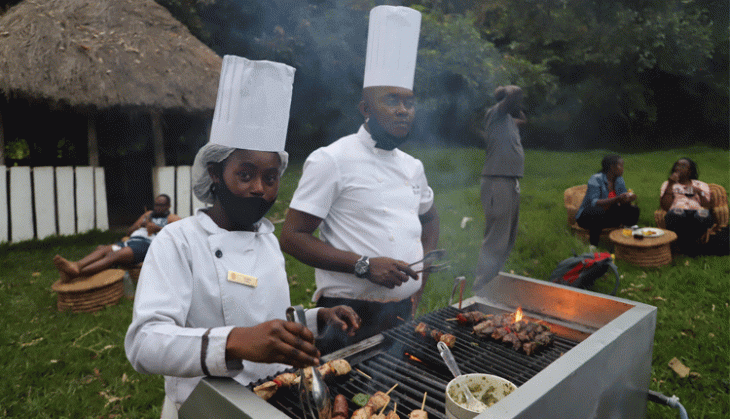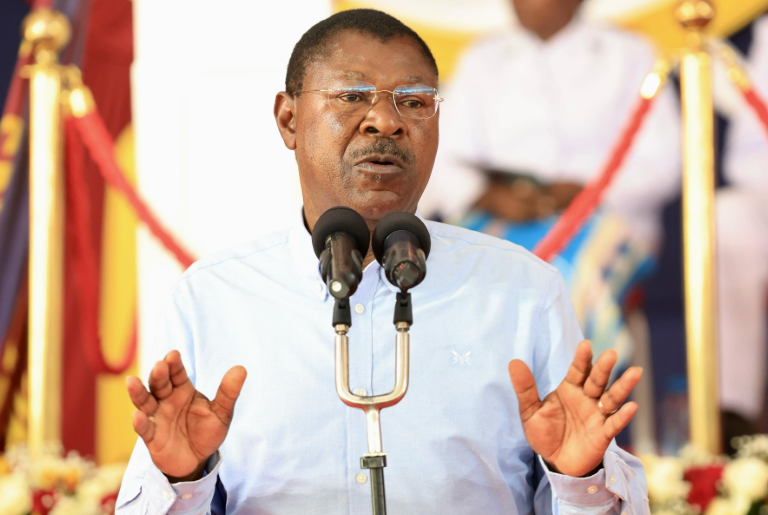A taste of Congolese cuisine

Before I travelled to the Democratic Republic of Congo recently, I had heard a lot of stories on their food, a lot of warnings on what to eat and what not to, such that when I arrived in Goma, the one thing that I desired to taste was some bush meat or some of those strange foods people who have been there before talked of.
We arrived at Serena Goma, which was to be my abode for a couple of days. Since I was famished, I headed over to the Ramoka restaurant, to explore what the Congolese delicacies were on offer.
Named after a mountain in Goma, the restaurant offers panoramic views of the lake.
There was everything that I was used to eating at home including fish fillet and rice, but one thing that got me gripped was their ugali.
I thought ugali would be the only meal that would take away the hunger, so I served it with goat meat and some traditional veggies called sombe.
Something new
I sat down with Huguette Bishweka, the sales and marketing director at Goma Serena Hotel, to learn more of the food culture there.
We began with what was on my plate and that was sombe, which she told me was one popular meal in Congo more like our sukuma wiki in Kenya.
However, for them, sombe are leaves from the cassava plant, which surprising take a long time to cook.
You first boil the leaves for some time and then add beef, green pepper, sliced onions, garlic as well as palm oil, then mix well.
From there you let it cook until there is a change in the leaves smell and colour. It turns dark when well cooked.
“Some people will add fish and others would add a cow’s leg (binono) and others would add palm oil called kalanga.
It all depends on the taste or which part of the country you belong to, but by the end of the day it’s still sombe,” explains Huguette.
While our kales can cost around Sh10 per bunch, cassava leaves can cost around Sh100.
If you take a trip around town, you’ll meet vendors carrying them on the head, some transporting them on chukudu (a wooden wheelbarrow), which is a popular means of transport in the region.
I noticed that just like in Kenya, Congolese meals comprise starchy foods, with veggies and meat as the stew.
Their most common meats are goat and chicken. Beef is rare and they rely on special cuts of pork loins and beef fillet from Kenya.
“Since we are a landlocked country, we import sea food such as crabs, salmon and all those things that you can find along the coast.
There are some sausages too such as pork, chicken, stuff that are not easy to find around because it’s not in people’s cultures to try out those, so we have to be import them,” she tells me.
The seafood is mainly imported from Belgium, transiting through Kinshasa where the hotel’s supplier is.
As for the fish, though currently plagued with a decline, they sometimes import tilapia. The fish is fried, steamed or smoked.
Savoury meals
Huguette explains that another type of food that takes long to prepare is the poulet a la mouambe.
Mouambe chicken is popular in Central Africa, and is prepared by combining spices, chicken and palm butter for consistency.
Mouambe chicken is a savoury dish that’s considered the national dish of Angola.
It is made by combining chicken, spices and palm butter to create a stew-like consistency and it’s taken with rice or boiled cassava leaves.
The Congolese cuisine has influences from France, Belgium and Central and West Africa.
Subsistence farming is the commonly practiced here, with crops such as sweet potato, cassava, yam, taro, plantains, okra, beans, and groundnuts the most farmed.
I also got a chance to sample some of the street foods including ngulu yako tumba or ntaba (meat kebab), which usually comprises goat meat or grilled pork.









